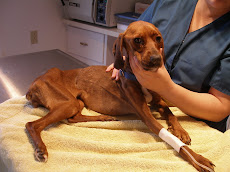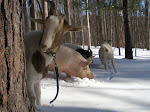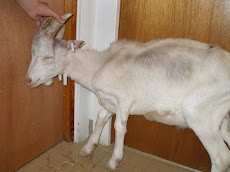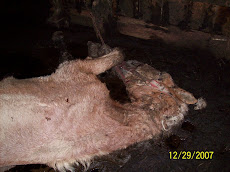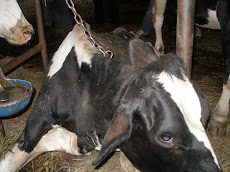ANIMAL CARE AFTER HURRICANE KATRINA: ONE VETERINARIAN'S PERSPECTIVE
Working to Save Animls in Gulf Coast Chaos
Tuesday, September 27 2005
By Timothy O'Leary DVM
Before long America will develop hurricane burnout. Not for lack of concern or compassion, but because at all levels of government the response ball was kicked "wide left". The recent disaster was another solar plexis punch to our collective egos. The spin doctors are hard at work and soon we will be persuaded to forget what we saw and place are collective heads back into the sand.
In time we will forget those not evacuated, the 2000 missing children on CNN, the decades of levee neglect, the storm deterrent effect of long destroyed marsh land and ,of course, "Mickey "Brown and his Arabian horse qualifications.
People choose their battles and I am very lucky to be involved in the animal care field. With hope, public reaction to the above problems will produce a few politically courageous deidicated leaders to address these issues.
The Humane Society of the US estimated that approximately 50,000 animals were left behind in New Orleans. "Animal people" are an eclectic lot who suffer when animals suffer. Their concern is not jaded by species,breed, or the pets' economic status. When our innocent ones (children and animals) aare facing harm, political, social and economic fences collapse. It is important not to comingle govermental inadequacies with the response of the "person in the street" to the recent tragedies.
Barbara Carr, executive director of the Erie County SPCA, experienced the bureaucratic chaos at the national level with the animal welfare organizations: conflicting information, unanswered e-mails, forms, paper work, delays, wrong numbers, and voice mail all creating general response inertia.
Fortunately for many hundreds of animals, Director Carr took the "Nike" approach and the wonderful people of the much nationally maligned Western New York area made a rapid response happen. Gina Browning, the SPCA spokesperson , went to work raising money. The people of Eire County responded with great generosity. A 12 week rotating contingent of animal help was off to the Big Easy. It was my honor to be part of the first response effort. I was asked to write some comments on my observations and so in no particular order here goes.
The local work load at the Erie County SPCA does not slow down during a national animal emergency. The SPCA is sending its valuable people out of state, leaving more work for those there. When I last saw Gina Browning, she was offering to help clean kennels.
The first animal triage station was set up in a feed and garden center adjacent to the flooded ninth ward. The operation was organized by Dr. Missy Jackson of the Southern Animal Foundation of New Orleans. Dr. Jackson is a classic, timeless, inner-city veterinarian who is a cross between Old Mother Hubbard and a pit bull. She informed me that the "FEM-A**" people forbade her to work on neighorhood pets, "rescued animals only". I told her I had a car full of veterinary supplies and a first-rate assistant (the SPCA"s Joanie D'Aurelio) and proceeded to set up "shop" in the parking lot.
During the drive down, my biggest concern was the fear the government would order the remaining animals to be destroyed as a health and safety risk. Initially, the soldiers were not allowed to rescue animals. It visably affected their morale and created victim resistance. Fortunately a compassionate , grounded military officer somewhere changed all that.
Animal rescue field teams from HSUS, ASPCA, LASPCA and independent fire rescue squads combed the neighborhoods for furry survivors and the rare living person. Soon trucks and boat trailers would line up filled with airline sky kennels containing sick, starving, terrified animals.
The victims presented health hazards via chemical contamination, infectious agents, and bite risk. The chaos created by all those trucks, boats, people and animals simultaneously arriving was overwhelming. Thanks to many local volunteers, we soon got our "land legs", set up a system and got to work.
As the confusion abated, one could look in any direction and see heart warming scenes. Burly firemen cradling small dogs like fullbacks avoiding fumbles, people helping people, red beans and rice and the Cajun woman in floral print dresses bottle feeding kittens in the bird food aisle that could just as well have been a front porch.
An attractive tall woman walked by sporting high water waders with a box of dog treats attached to her shoulder high boot straps. It was reminiscent of film noir night club scenes: "Cigars? Cigarettes?". I could envision her wading through the toxic waters: "Kibble? Pupperoni?" The image detracted from the danger to which she exposed herself. Man hole covers flew off as flood waters rose.
The French Quarter was bruised but dry. The center island of canal street became a row of makeshift television studios. I witnessed three police officers entering an office building shadowed by a flock of television crews.
I saw New York police assisting New Orleans police. I didn't see any FDNY personnel but I'll bet they were there. The protectors of one wounded city helping another. Even inept governments can't mess that up. I must admit, my first impression while viewing the NOPD, NYPD, and the 82nd airborne working in tandem was YIKES!!! I promptly crossed looting off my "Things to Do" list.
The air was hot and humid with a pervasive stench of rotting garbage and chemical laden mud punctuated at times with the putrid smell of something dead. Hopefully just a rat.
Each animal would be given a number, a medical record, and a description of where or how it was found. Even local volunteers were at times unsure.
Many dogs and cats required toxic chemical deris removed. Most needed their eyes flushed. Most were emaciated and nervous. Some had blunt physical trauma or bite wounds and a few had been shot. Many were sick from water ingestion. Others clearly were victims prior to the hurricane.
As night curfew approached, animal rescue vehicles became animal transport trucks moving the former pets 45 slow miles to the Lamar Dixon Expo Center (in Gonzales, La). The animal equivalent of the Super Dome. Five enormous equine stables would serve as the world's largest kennel. The number of animals rose to 2400, then 3500. The order from "above" was to take no more. Ultimately, some 200 full cages were left unattended at the Jefferson Feed Center (emergency animal housing location in New Orleans). Alternative animal staging areas were declined due to "liability issues".
The pressure to move animals out of Lamar Dixon, coupled with stone age office skills and all those chiefs created an enormous second wave of orphan animals. Referring homeless victims to Petfinder.com came up a little short considering the low number of computers in the Ninth Ward prior to the hurricane,let alone after.
At the end of the 24 hour day, the volunteers made it all somehow work. They cleaned the cages, fed the horses, birds, cats, dogs, and reptiles. They were the people who helped and then consoled those who left again without their much loved pet.
They are animal people.
When someone is drowning, the average person doesn't consult his supervisor or worry about liability issues before throwing a life preserver. As the parish (county) leader said, "Send another idiot, a beter idiot, just not the same idiot".
